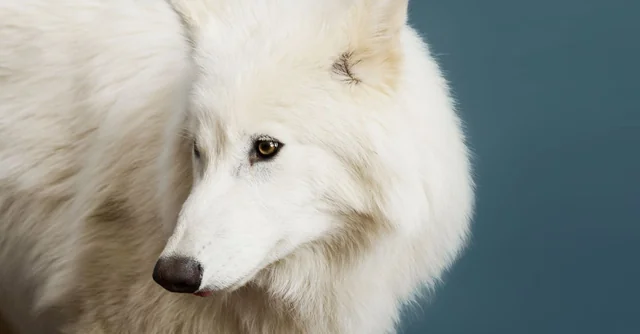Introduction
Dire wolves (Aenocyon dirus) are among the most iconic prehistoric predators, immortalized in popular culture by shows like Game of Thrones. But when did these massive canids actually go extinct? And why are we suddenly hearing about their “return”?
Recent scientific discoveries have reshaped our understanding of dire wolves—revealing not just when they disappeared but also how their legacy might still linger today. This article explores the timeline of their extinction, the reasons behind their demise, and the surprising ways they’re making a modern comeback (sort of).
1. When Did Dire Wolves Go Extinct?
Dire wolves roamed North and South America during the Late Pleistocene epoch, roughly between 125,000 and 9,500 years ago. The most widely accepted estimate for their extinction is around 9,500 years ago, coinciding with the end of the last Ice Age (the Pleistocene-Holocene transition).
Evidence of Their Extinction
- Fossil Records: The La Brea Tar Pits in Los Angeles contain thousands of dire wolf skeletons, with the youngest specimens dating to about 9,500 years ago.
- Climate and Ecological Shifts: The warming climate at the end of the Ice Age drastically altered ecosystems, leading to the decline of megafauna that dire wolves relied on for food.
- Human Impact: While humans likely contributed to the extinction of other megafauna (like mammoths), their direct role in the dire wolf’s demise is less clear.
Unlike their smaller gray wolf cousins (Canis lupus), which survived and thrived, dire wolves were highly specialized hunters dependent on large prey. When those prey species (such as bison, horses, and ground sloths) dwindled, dire wolves struggled to adapt.
2. Why Did Dire Wolves Go Extinct?
Several key factors contributed to their extinction:
A. Over-Specialization
Dire wolves were hypercarnivores, meaning their diet was almost exclusively meat—unlike gray wolves, which are more adaptable. When their primary prey (megafauna) disappeared, they had no fallback options.
B. Climate Change
The end of the Ice Age brought:
- Warmer temperatures
- Shrinking grasslands (replaced by forests)
- Reduced availability of large herbivores
C. Competition with Gray Wolves and Humans
- Gray wolves were more versatile hunters and could survive on smaller prey.
- Humans may have indirectly outcompeted dire wolves by hunting the same animals.
D. Genetic Bottlenecks
Recent DNA studies suggest dire wolves had low genetic diversity, making them vulnerable to environmental changes.
3. The Shocking Discovery: Dire Wolves Were Not True Wolves
For years, scientists assumed dire wolves were just larger, extinct relatives of gray wolves. But a 2021 genetic study revealed a bombshell:
- Dire wolves (Aenocyon dirus) were a completely separate lineage—not closely related to modern wolves at all!
- They split from other canids about 5.7 million years ago, long before gray wolves evolved.
- This means dire wolves were an evolutionary dead end with no living descendants.
This discovery rewrote their entire classification and raised new questions about why they couldn’t adapt when gray wolves could.
4. Why Are People Saying Dire Wolves Are “Back”?
Despite being extinct for millennia, dire wolves have made a surprising “return” in three key ways:
A. Genetic Resurrection Projects
Scientists are exploring de-extinction using CRISPR gene-editing technology. While no full dire wolf clone exists yet, researchers are considering:
- Modifying gray wolf DNA to resemble dire wolf traits (larger size, stronger jaws).
- Using closely related species (like African painted dogs) as surrogates.
However, ethical and ecological concerns make full de-extinction unlikely anytime soon.
B. Selective Breeding “Dire Wolf Dogs”
Some breeders claim to recreate “dire wolf-like” dogs by crossing:
- Alaskan Malamutes
- German Shepherds
- Siberian Huskies
These “American dire wolves” (a marketing term) are just large, wolf-like dogs—not actual dire wolves.
C. Pop Culture Revival
Thanks to Game of Thrones, dire wolves are more famous than ever. This has sparked:
- Increased interest in Pleistocene rewilding (reintroducing Ice Age-like ecosystems).
- New research into ancient canids.
5. Could Dire Wolves Ever Truly Come Back?
While true de-extinction remains speculative, advances in genetics and paleobiology keep the idea alive. Key hurdles include:
- Lack of intact dire wolf DNA (most samples are too degraded).
- Ethical concerns (should we revive an extinct predator?).
- Ecological impact (where would they live?).
For now, dire wolves remain firmly in the past—but science fiction might one day edge closer to reality.
Conclusion
Dire wolves vanished around 9,500 years ago, victims of climate change, prey loss, and competition. Modern science has revealed they weren’t even true wolves but a unique lineage with no living heirs.
Their “return” today is more about cultural fascination and genetic experimentation than an actual revival. Still, as technology advances, who knows? The howl of the dire wolf might one day echo through the wild again.


